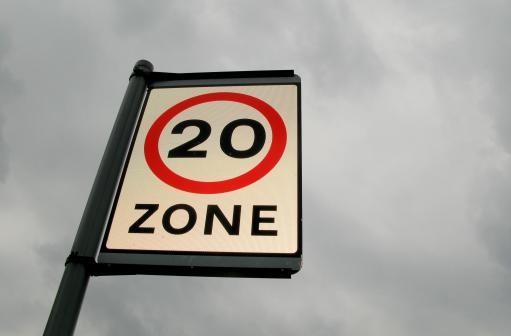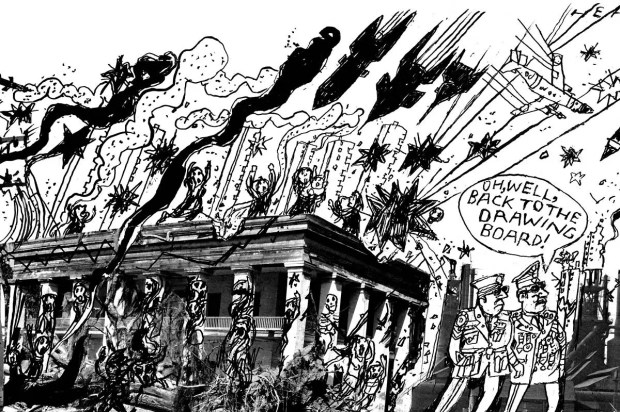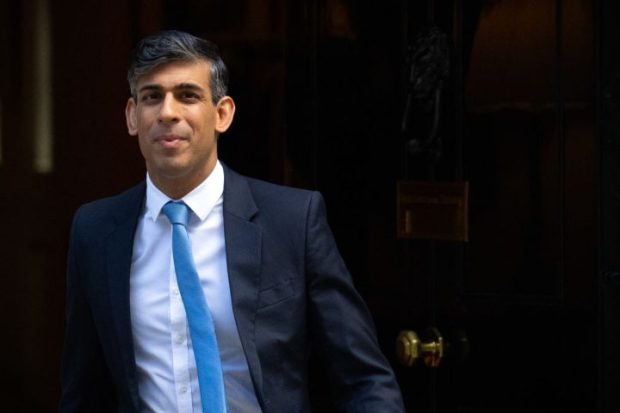‘Absolutely insane’ is the verdict of Penny Mordaunt MP on the Welsh government’s introduction of a 20mph speed limit on residential roads. Having driven along not a few residential roads in Welsh towns and cities earlier this year, I can only agree, with one caveat. There are quite a few places in Wales, and not just in Wales, where the combination of narrow roads, parking and other traffic makes any thought of reaching even 20mph optimistic.
Urban areas, in particular, are quite adept at imposing their own speed limits, in the form of traffic conditions. This is a reality that probably influences someone’s decision about what form of transport, if any, to use, without the need for even the gentlest nudge from officialdom.
The steady encroachment of the 20mph limit is only adding to the sense that motorists are under siege
But the 20mph evangelists are winning, in many places without drivers ever being properly asked, or authoritative findings that it really works. In London, such limits now apply on more than half of all roads, and the enforced snail’s pace that now applies to roads and to cars that were both engineered for 30mph threatens to make law-breakers of us all. Even the Archbishop of Canterbury, for Heaven’s sake, has been busted (doing a reckless 25mph only yards from his residence at Lambeth Palace).
The steady encroachment of the 20mph limit, on to roads where the argument for it is far from obvious, and its zealous policing – even as shoplifting (of goods under £200), overt drug-dealing and other flagrant breaches are ignored – is only adding to the sense shared by many motorists that they are under siege. As they face ever greater restrictions on car access to town and city centres, with the various forms of Ulez (Ultra Low Emission Zone) charges or fines, they face a permanent crawl along what were hitherto often clear roads thanks to speed limits imposed in the name of safety.
How much public support these measures really have may become clearer over time at the ballot-box – if anyone can figure out where the mandate for what increasingly comes across as an all-out assault on the private car really lies. The Uxbridge and South Ruislip by-election offered a glimpse into the possible strength of feeling on the extended London Ulez, while local opposition has forced some councils to curb their enthusiasm for LTNs (low traffic neighbourhoods). Rishi Sunak’s recent statement that the Conservative party was ‘on the side of motorists’ suggested that he and/or his advisers had detected a potential drivers’ rebellion that could be used to electoral advantage.
As well it might. I am no speed merchant (honestly!), but if I drive in central London at all now, it is to get out of the city. Inside the North and South Circulars it makes little sense, in terms of time or cost, to use a private car. It is another matter if you have small children, are less mobile yourself, or are helping someone disabled or elderly to get from A to B. In these circumstances, a private car can be a saviour. If you have ever waited for ‘hospital’ or ‘disabled’ transport, or hobbled to the station lift, only to find that it is ‘out of order’, you will know what I mean. Then again, inner London is fortunate, even unique, in its provision of public transport. What may work in the metropolis may well not work elsewhere.
And, of course, times have changed. Environmental awareness and the quest for clean air have brought huge improvements that no one would dispute. But do those same benefits really require the hostility towards cars (and their drivers) that increasingly prevails?
I used to enjoy driving in London. As with many capital cities, there was a sense of life speeding up once you crossed into the city environs from the outer ring road. Most drivers, it seemed, knew how to drive in the capital; lane discipline was exemplary, along with forgiveness if you got it wrong. Everyone, but everyone, stopped for pedestrians at zebra crossings (being forced to stop by a pelican crossing red light doesn’t generate the same sense of doing the right thing). If you could navigate the complexities of Marble Arch or Hyde Park Corner, your reward was to drive at 40mph along Park Lane.
For better or worse, those days are gone. Once you pass the outer ring road the sense is no longer of life speeding up, but of life slowing down. Is this how a vibrant capital is supposed to be, or is vibrancy not something post-pandemic we do any more? On my rare ventures out in my car, I can barely watch the road for fear of neglecting the needle on the speedometer. If you stick to 20mph – especially, dare I say, if you are what we used to call a ‘lady driver’ – you will be mercilessly tail-gated by a delivery van or a massive SUV, and oh how they hate it when you tip your brakes. And I bet you that it would be me, and not they, who got the ticket in the event that I sped up to placate them.
Like many drivers, I imagine, I have no objection whatsoever to a 20mph limit – or lower – around schools and hospitals and genuinely residential streets. The safety argument is irrefutable. But on a main road, after rush hour, what sense does it really make? How many children are really going to dash out in front of you?
Once upon a time, there were primary school drills on looking right, left and right again, before crossing the road. It may be my imagination, but there seems rather less of this these days. Was it the deserted streets during the pandemic that encouraged pedestrians to ignore the distinction between road and pavement, or just that they have eyes only for their phones. Those on foot need to show some awareness, too. And don’t get me started on cyclists – other than to say that the 20mph speed limit makes no sense unless it applies also to bikes and scooters, which can also cause serious, even fatal, injuries if they hit someone at speed.
If this limit is to be enforced, with swingeing penalties, for motorists, then it must be enforced for all road users, too. And let’s not confuse the arguable benefits of low speed with saving the planet. Lower speeds, slower progress, might even mean more air pollution, not less. I look forward to the debate – which must surely come – between the Ulez enthusiasts (the clean air campaigners) and the 20mph (road safety) warriors, whose lobbying may turn out to be at odds. How long might it then be before someone pipes up with some expert evidence to point out that the optimal trade-off between clean air and road safety in an urban environment is to be reached at… an entirely satisfactory – and sane – 30mph?
Got something to add? Join the discussion and comment below.
Get 10 issues for just $10
Subscribe to The Spectator Australia today for the next 10 magazine issues, plus full online access, for just $10.




















Comments
Don't miss out
Join the conversation with other Spectator Australia readers. Subscribe to leave a comment.
SUBSCRIBEAlready a subscriber? Log in